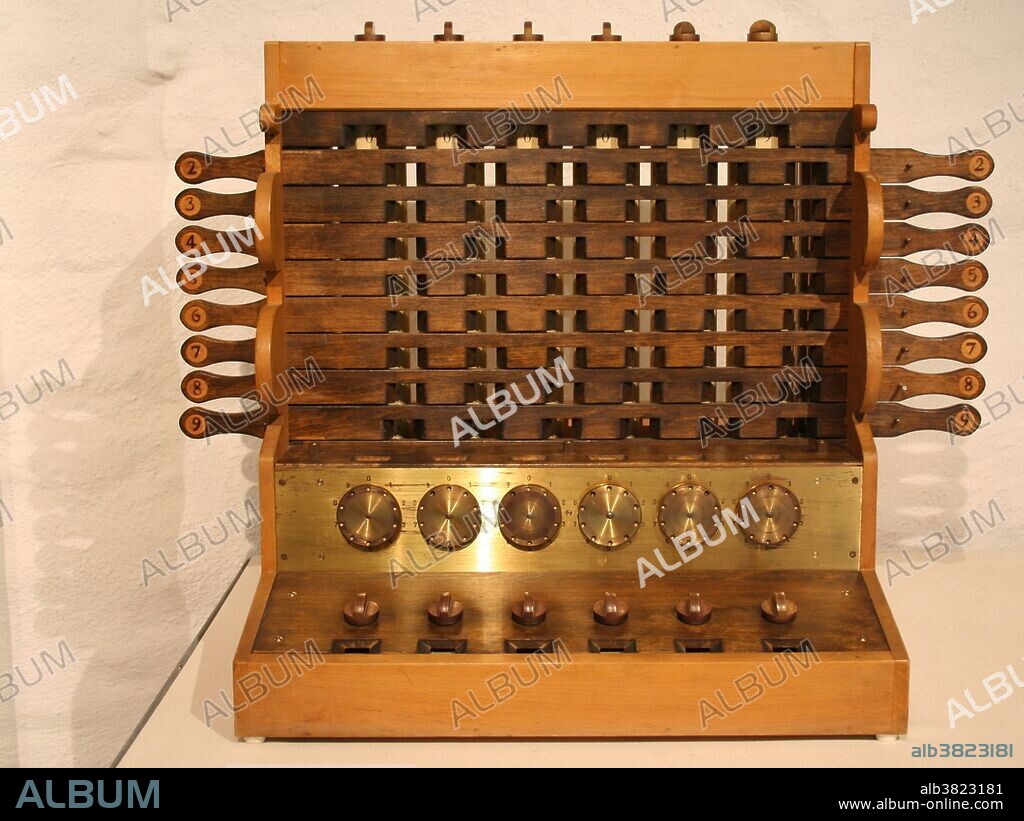alb3823181
Replica of Schickard's Calculating Clock

|
Añadir a otro lightbox |
|
Añadir a otro lightbox |



¿Ya tienes cuenta? Iniciar sesión
¿No tienes cuenta? Regístrate
Compra esta imagen.
Selecciona el uso:

Título:
Replica of Schickard's Calculating Clock
Descripción:
Traducción automática: En 1623 y 1624, Wilhelm Schickard, en cartas que envió a Kepler, informó sobre su diseño y construcción de lo que denominó un "arithmeticum organum" (instrumento aritmético) que él había inventado, pero que más tarde sería descrito como un Rechenuhr. (calculando el reloj). La máquina fue diseñada para ayudar en las cuatro funciones básicas de la aritmética (suma, resta, multiplicación y división). La máquina podía sumar y restar números de seis dígitos e indicaba un desbordamiento de esta capacidad tocando una campana. La máquina sumadora en la base se proporcionó principalmente para ayudar en la difícil tarea de sumar o multiplicar dos números de varios dígitos. Para ello se montó sobre él una ingeniosa disposición de huesos de Napier giratorios. Incluso tenía un "registro de memoria" adicional para registrar cálculos intermedios. Schickard contrató a un relojero profesional llamado Johann Pfister para construir una máquina terminada, pero fue destruida en un incendio. Schickard abandonó su proyecto poco después. Él y toda su familia fueron aniquilados en 1635 por la peste bubónica durante la Guerra de los Treinta Años.
In 1623 and 1624, Wilhelm Schickard, in letters that he sent to Kepler, reported his design and construction of what he referred to as an "arithmeticum organum" (arithmetical instrument) that he has invented, but which would later be described as a Rechenuhr (calculating clock). The machine was designed to assist in all the four basic functions of arithmetic (addition, subtraction, multiplication and division). The machine could add and subtract six-digit numbers, and indicated an overflow of this capacity by ringing a bell. The adding machine in the base was primarily provided to assist in the difficult task of adding or multiplying two multi-digit numbers. To this end an ingenious arrangement of rotatable Napier's bones were mounted on it. It even had an additional "memory register" to record intermediate calculations. Schickard hired a professional, a clockmaker named Johann Pfister to build a finished machine, but it was destroyed in a fire. Schickard abandoned his project soon after. He and his entire family were wiped out in 1635 by bubonic plague during the Thirty Years War.
Crédito:
Album / Science Source
Autorizaciones:
Tamaño imagen:
4200 x 3150 px | 37.9 MB
Tamaño impresión:
35.6 x 26.7 cm | 14.0 x 10.5 in (300 dpi)
Palabras clave:
ADICION • CALCULADORA • CIENCIA • DIVISION • FAMOSA • FAMOSO • HISTORIA • HISTORICO • IMPORTANTE • INVENCION • MATEMATICAS • MODEL • RESTA • SIGLO XVII • TECNOLOGÍA • TECNOLÓGICA
 Pinterest
Pinterest Twitter
Twitter Facebook
Facebook Copiar enlace
Copiar enlace Email
Email
